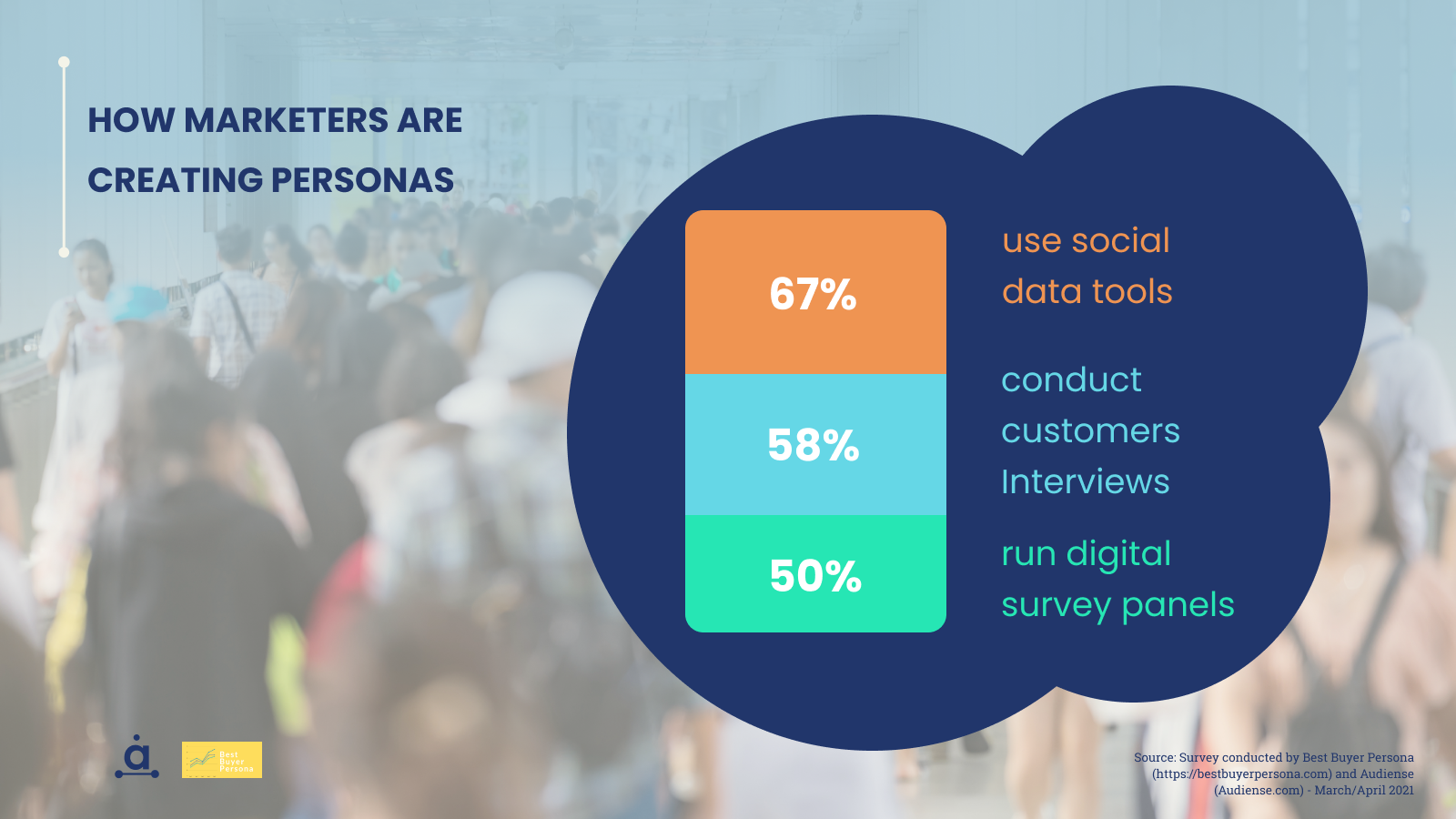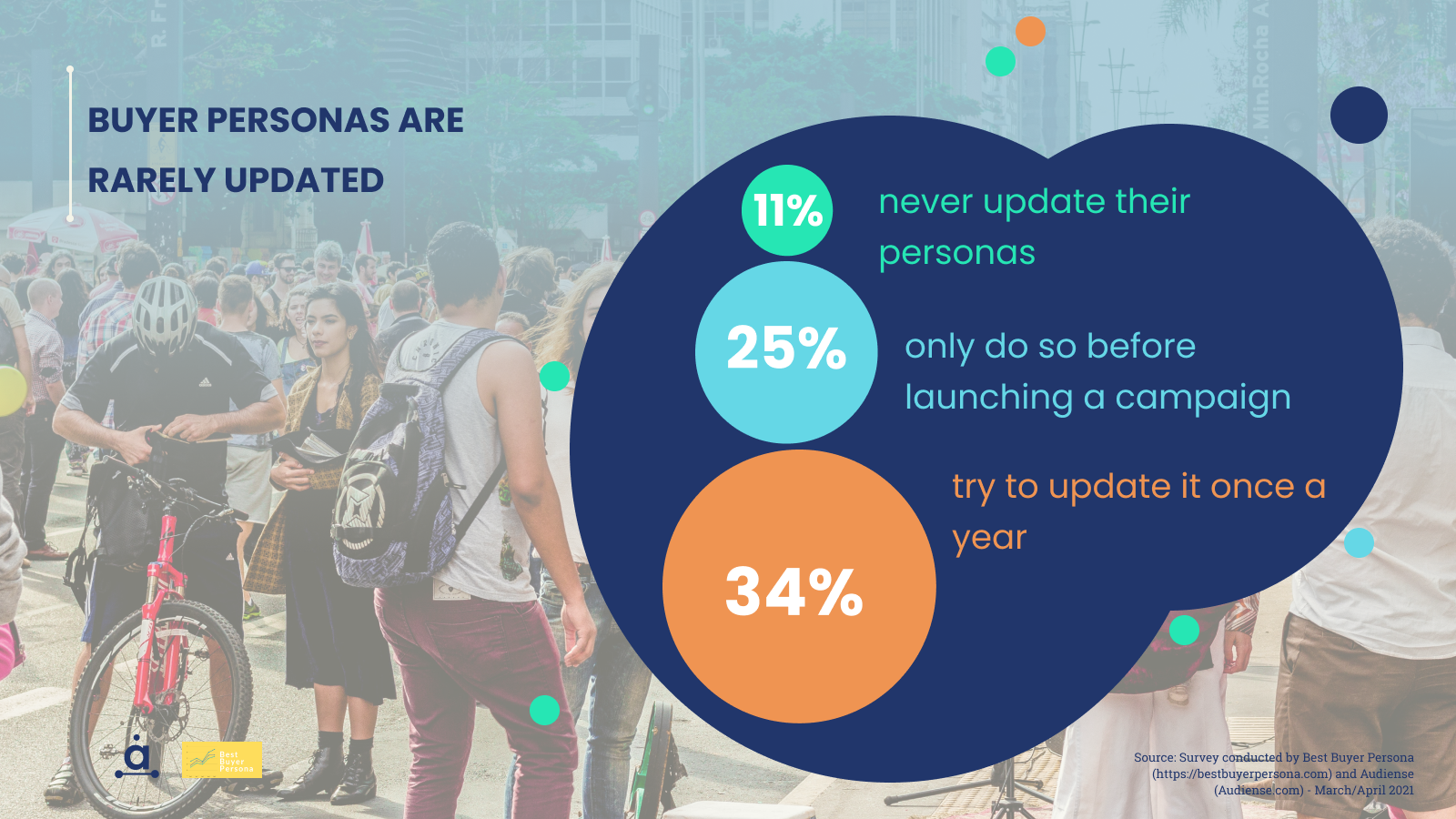1. Put words into action
Building buyer personas is marketing 101 and our survey revealed that 77% of the marketers surveyed have indeed created buyer personas at some point in their careers. We know they’re important, but in the case of buyer personas, actions speak louder than words.

A surprising number of respondents devote time and resource to creating personas, only to put them in a drawer, never to be seen again. 77% of marketers don’t refer to them before creating campaigns, and furthermore, 85% of them don’t refer to them before a product launch.
What does this tell us? We spend a lot of time talking about buyer personas, but when push comes to shove, we rarely rely on them to inform campaigns. It’s abundantly clear that to make our campaigns better and improve our audience targeting, we need to focus on putting words into action.
2. Diversify your data sources
One reason why marketers may create personas but fail to use them could be that many felt the buyer personas they created simply weren’t accurate enough to be reliable. In fact, only 6 out of 10 marketers found their personas genuinely useful.
Looking closely at how marketers are creating personas, the top methods were social data, talking directly to buyer. Breaking that down, 67% of marketers use social data tools, 58% conduct interviews with their customers, and just over 50% run digital survey panels. This is interesting, as talking directly to consumers tends to be time-consuming, and presents a potential barrier for marketers.

Buyer interviews for example, are a fantastic way of gaining insight into one specific buyer journey, but can be difficult to apply on a grander scale. Social data, on the other hand, can help marketers quickly tap into their desired audiences and understand the affinities and interests that connect them.
Developing a streamlined process that combines multiple data sources from various methods, including social media, will give you a holistic overview of your audience. When you layer audience segmentation on to your social data, distinctive identities can quickly emerge and allow you to develop more accurate buyer personas, rather than a one-size-fits-all template.
3. Share learnings and stay up-to-date
A common paint point across industries for marketers is the feeling that their buyer personas just aren’t actionable. Looking at the results of the survey, there seem to be two reasons for this.
The first is that buyer personas seem to remain solely within marketing teams. 90% of our respondents claim that buyer personas are only created to support marketing. Taking the time to share key learnings and insights with relevant teams could help buyer personas have a real impact on the business, whether it’s helping develop products that suit your customers better or understanding what the sales team can do to trigger the purchase impulse.
The second is that once created, buyer personas are rarely updated. 11% of respondents claim they never update their personas, 25% only do so before launching a campaign, and 34% try to update once a year. If the last year is anything to go by, it’s pretty clear that a lot can change in a short time period. New trends emerge, new pain points arise, and your customers are moving on to the next shiny new thing. For personas to be effective, they need to be as real-time as possible, this is where social data tools come in.

On the whole, when it comes to buyer personas, it’s not that we don’t know how to create them, the difficulty involves turning them into a powerful tool for your business. Accuracy, reliability and relevancy are all key factors.

